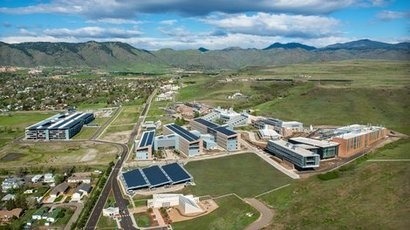
The research represents a critical milestone in the development of cadmium telluride (CdTe) solar cell technology, helping to pave the way for solar energy to directly compete with energy generated by conventional energy sources.
Silicon solar cells currently represent 90 percent of the solar cell market, but it will be difficult to significantly reduce their manufacturing costs. CdTe solar cells offer a low-cost alternative while also having the lowest carbon footprint and being better able to adapt to real-world conditions including hot, humid weather and low light. However, CdTe solar cells have not been as efficient as silicon-based cells until recently.
One key area where CdTe has underperformed is in the maximum voltage available from the solar cell, a measure called open-circuit voltage. The quality of CdTe materials has prevented industry, universities, and national laboratories for the past 60 years from obtaining an open-circuit voltage of more than 900 millivolts on billions of solar cells; the vast majority have been limited to 750 to 850 millivolts.
The research team has been able to improve cell voltage by shifting away from a standard processing step using cadmium chloride. Instead, they placed a small number of phosphorus atoms on tellurium lattice sites and then carefully formed ideal interfaces between materials with different atomic spacing to complete the solar cell. This approach improved the CdTe conductivity and carrier lifetime each by orders of magnitude, thereby enabling the fabrication of CdTe solar cells with an open-circuit voltage breaking the 1-volt barrier for the first time. The innovation establishes new research paths for solar cells to become more efficient and provide electricity at lower cost.
Funding for the research was provided by the Energy Department's SunShot Initiative, which aims to make solar cost-competitive with traditional energy sources. It was also supported in part by Oak Ridge National Laboratory's Center for Nanophase Materials Sciences.
The research study has been published in the Nature Energy journal article, "CdTe solar cells with open-circuit voltage breaking the 1 V barrier," authored by James Burst, Joel Duenow, David Albin, Eric Colegrove, Matthew Reese, Jeffery Aguiar, Chun-Sheng Jiang, Maulik Patel, Mowafak Al-Jassim, Darius Kuciauskas, Santosh Swain, Tursunjun Ablekim, Kelvin Lynn, and Wyatt Metzger.
For additional information:

